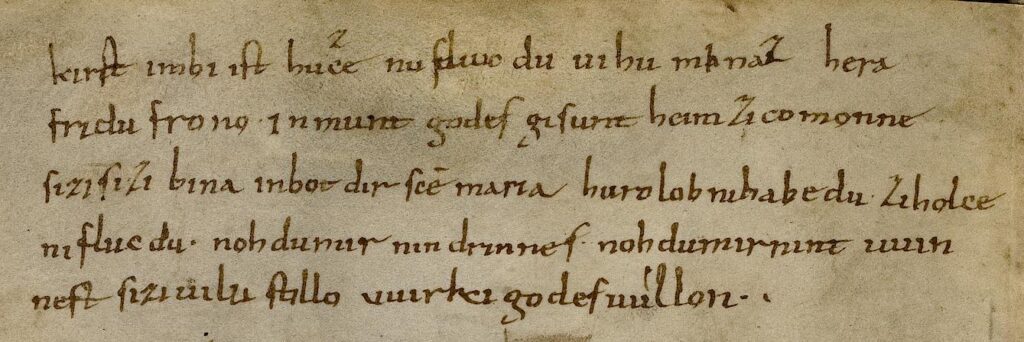Sizi Uilu Stillo
Bernd Thewes – Sizi Uilu Stillo (1994)
for trombone and keyboard percussion
Bruce Collings, trombone
Benjamin Kobler, keyboard percussion
Janet Sinica, video
Jan Böyng, editing
Julius Gass, recording producer/editing
Programme text by Bernd Thewes
The Lorsch Manuscript
Old High German/Rhenish Franconian

Kirst, imbi ist huze! nu fliuc du, uihu minaz, hera
fridu frono in godes munt heim zu commone gisunt.
sizi sizi bina! inbot dir sancte Maria
hurolob ni habe du zi holce ni fluc du,
noh du mir nindrinnes noh du mir nintuuinest.
sizi uilu stillo uuuirki godes uuillon!
Translation:
Christ, the bee colony is out (= swarmed out)!
Now, my animals (my cattle), fly again,
that in the peace of the Lord, in the protection of God,
you come home safe.
Sit, sit, bee. This is what St. Mary commanded you.
You shall not have permission (= holiday),
to fly to the wood (= into the forest),
thou shalt neither escape nor run away from me.
Sit very still and do what God wants (work God’s will)!
uihu – cattle, animal(s)
ind-rinnan (n = negation) – to escape, to escape from
int-uuinnan = to escape
This text, handed down in an old Vatican manuscript and known as the “Lorsch Bee Blessing”, in which Christian and magical elements overlap, interested me because of its peculiar central metaphor, the command to the bees not to fly into the forest, but to sit still and fulfil God’s will. To condemn the bees, whose mythological symbolism goes far back into ancient Greek and Egyptian culture and is still present in the 20th century (Maeterlinck, Joseph Beuys), to sit still seems to me a parable of the hostility to life of the attempt to understand the world as a rational and ordered object (dead thing); the text strikes me as an ironic critique of European scientificity in its infancy. Incidentally, the first experiments in “freezing” musical events in writing by means of notation were also successful at that time. The palpable tension in the image of standstill as prevented movement is the quasi-energetic core of my composition, which could be formally described as a paraphrase of a metrical ostinato framework: Against the background of a carousel-like metric, the sound development, which also processes phonetic material of the original text, progresses associatively from the beginning to the end.
(Bernd Thewes 1995)
